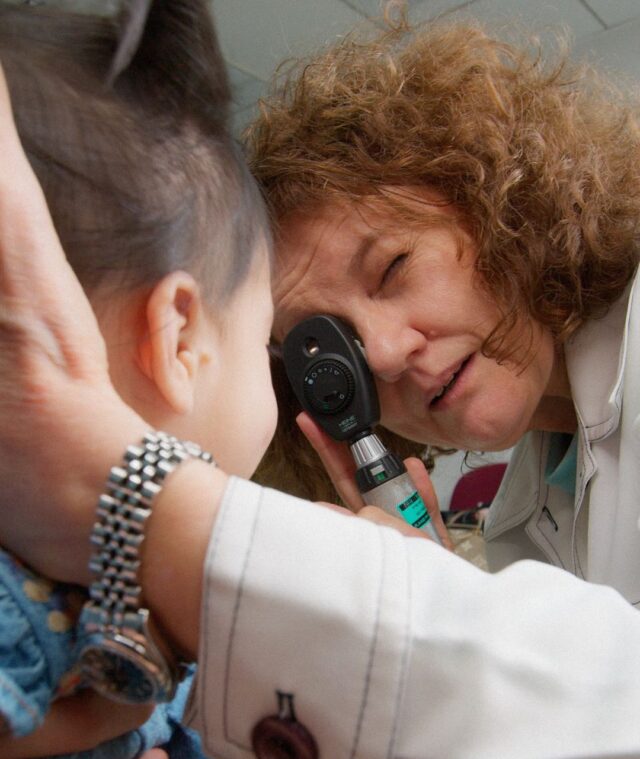Photo by Pascal van de Vendel on Unsplash
Ever noticed your child closing, rubbing, and squinting one of his eyes frequently? Does he turn to one side when looking at something (e.g., watching television)? Or perhaps, he is having a difficult time reading?
If you answered yes to these questions, your child might have amblyopia or “lazy eye.”
In this guide, you will learn what lazy eye is – its causes and symptoms – and four treatment methods recommended by the best eye specialist in Dubai.
What Is Pediatric Amblyopia?
Pediatric amblyopia is a condition in children where the brain prioritizes one eye over the other. In most cases, it ignores the eye that does not get enough stimulation, causing a delay in the development of visual memory (for clear images from this weakly focused eye to the brain).
But make no mistake. While it is commonly known as “lazy eye,” the eye’s “laziness” is not at fault in this condition. Instead, it is a developmental issue concerning the clarity of images being transmitted from the eyes to the brain.
What Causes Lazy Eye? 5 Causes
A lazy eye is often the outcome of an underlying condition that involves the transmission of clear images between the brain and the eyes. In some cases, it could be hereditary.
According to experts in eye care for children, several things may cause amblyopia or lazy eye, including:
1. Strabismus
Strabismus – more commonly known as “crossed eyes” – is one of the more prevalent causes of lazy eye / Amblyopia. It involves one or both eyes wandering in a different direction (i.e., in, out, up, or down).
When the eyes don’t line up, the straighter one becomes more dominant in terms of visual strength. Since the weaker eye doesn’t focus properly, the brain begins to ignore the signal it sends, which eventually leads to amblyopia.
2. Anatomical Issues
While common, not all amblyopia cases involve strabismus, which is why some children with the condition have perfectly straight eyes.
If this is the case, it could be that the “lazy eye” is due to a structural or anatomical problem – like a cataract or droopy eyelid or even Retinal / Macular damage– which interferes with the child’s vision.
3. Anisometropia
There are also cases wherein lazy eye is caused by unequal vision strength in the eyes. This condition is known as anisometropia. In this situation, the blurry eye becomes the brain’s lesser “favorite,” and the stronger one becomes more dominant.
4. Genes
Amblyopia may also be ingrained in a child’s genetic make-up. In most cases, children with developmental delays or those who are born prematurely are more likely to have a lazy eye.
5. Eyesight Problems
Some eye conditions can lead to amblyopia, such as myopia (nearsightedness), hyperopia (farsightedness), and astigmatism. All these issues cause blurry vision at one point or another and cause the brain to ignore the images the eyes send over time, resulting in amblyopia on one or both eyes.
How Do You Fix Amblyopia? 4 Recommended Treatments
Although amblyopia is a common problem that impairs eyesight in many children, it responds well to treatment. Here are the four recommended ways to “fix” amblyopia:
1. Eye Patch
One of the best ways to “train” the lazy (weaker) eye into working is by covering the stronger eye with a patch. This way, the brain will only get to process information from the weaker eye.
Take note that an eye patch won’t get rid of an eye turn. What it does improve is the vision of the lazy eye.
A child with amblyopia should wear an eye patch for roughly two to six waking hours a day for several months up to a few years. This may vary based on several factors, including:
- The severity of the lazy eye
- The child’s age
- How well the eye specialist’s instructions are followed
While wearing an eye patch, a child with a lazy eye should be encouraged to do close-up work, like reading and coloring.
Parents can choose between two types of patches: placed directly over the eye like a band-aid or made of cloth designed to fit over one lens of the child’s eyeglasses.
2. Corrective Lenses
Children with amblyopia can also benefit from wearing corrective eyeglasses, mainly if the amblyopia results from refractive errors or anisometropia (a condition where the vision on one eye is clearer than the other).
Wearing glasses helps “switch on” the weaker eye by sending more focused images to the brain.
3. Atropine Drops
In some cases, children with amblyopia refuse to wear their eye patch despite their parents’ best efforts to convince them of its benefits. If this is the case, atropine drops may be recommended to temporarily blur out the dominant eye’s vision to achieve the same results as an eye patch – or a potentially better one.
4. Eye Surgery
If a cataract or strabismus causes the lazy eye, eye surgery could be the best solution. Cataracts can be surgically removed under local or general anesthesia, while strabismus is corrected by tightening or loosening the eye muscles that cause it to wander.
Overcome Lazy Eye
Overcoming a lazy eye as soon as it is diagnosed will improve not only your child’s vision but also his overall learning and functioning capacity. Boost your knowledge about the condition using this article and consult our best eye specialists for expert eye care for your child.








